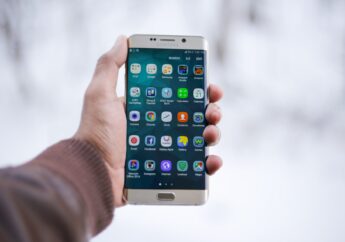How To Improve User Engagement: 7 Proven Techniques To Follow
by Arnab Dey Customer Service 28 July 2022

According to statistics, people devote a third of their waking time to mobile apps. The average user spends about four hours a day on apps. Despite this, keeping the attention of the target audience is not an easy task for developers and marketers. Even if you have created a unique and interesting product, you risk losing up to 60% of users in the first month.
To avoid this, you need to put a lot of care into how you interact with users and engage them. Then, you will not only receive their loyalty, but also make them your promoters — which will lead to new downloads, subscriptions, and purchases.
Competent developers of mobile and web applications think through the mechanics and features that will boost user engagement at the pre-development stage. Then, the marketing department continues to work on it. That collaboration — often with the involvement of UX designers — is a core of creating apps people love.
So, let’s take a closer look at the ways to improve your app’s user engagement.
Checkout Seven Useful Techniques To Improve User Engagement:

1. Simplify Registration Process
The task of the product team is to make registration within web or mobile applications simple and understandable. Creating a username or login should not be difficult for the user.
Consider introducing streamlined authorization options through:
- Google email
- using an Apple ID
- through social networks (Facebook, Twitter, Instagram)
The user wants to start using the application as soon as possible. Therefore, at the registration stage, it’s also good to exclude all fields that are not strictly necessary for the beginning.
Users should be able to stay logged in when the app is closed. For apps that contain a user’s financial info or other sensitive data that has to be protected, introduce Touch/Face ID or a short PIN for quick access to the app.
Your main task is to give users access to as many useful features as possible as soon as they click on the app’s icon. The authorization process should not interfere with it.
2. Improve User Experience
Onboarding is an instruction that teaches the user to work with the program. This is an important factor that can help boost user engagement in an app or, on the opposite, damage it drastically. During the onboarding stage, users evaluate the product’s capabilities and value and decide to leave or stay.
For onboarding to be effective, follow these rules:
A. Create high-quality visual slides without unnecessary information. Quickly get the person up to speed — give them a quick guide that can be flipped through in a couple of seconds. Write concisely and without jargon. This will show your respect for the user’s comfort and time.
B. Choose the key features of your product and focus on them. Show only the basic features on the slides and let users figure out the additional ones on their own.
C. Don’t forget the “Skip” feature. Part of your audience has already used similar applications. Allow experienced users to skip parts of the onboarding or all of it.
It is very good if onboarding takes place in an unobtrusive game form. This should be facilitated by both the design of the application and text instructions.
3. Add Gamification Elements
Gamification is the backbone of modern marketing. Game elements have increased the popularity of many apps. Vivid examples are the Duolingo language learning platform, the MyFitnessPal sports motivator, the Todoist task management service, and so on. Gamification in these helped developers to create unique, memorable user experiences that engaged a lot of people.
Popular gamification features are:
- Reward systems with points or bonuses;
- Daily game tasks;
- Badges of achievements;
- Quizzes with prizes;
- Countdown to an important event, etc.
It is also important to combine virtual and material rewards — like in-app points and promo codes for discounts — then you will be able to achieve high user engagement.
4. Use Personalized Push Notifications
When the app uses push notifications, it invites users to a dialog. For this dialog to interest people and not be intrusive, use notifications only when users haven’t appeared in the application for a long time, have an unfinished target action, or if you want to ask them a question (that connects to their in-app activity.)
Push notifications should be personalized. Address users by names (or usernames), remind them of their activity within the app, offer a product they were interested in, etc.
5. Create Engaging Content
Content in mobile and web applications is significant for user engagement. An additional method of driving user involvement up, for instance, can be e-mail marketing. It can include a welcome letter, a description of the product’s value, user success stories, and other product-specific, interesting details.
6. Develop a Reward System
Reward programs are an effective engagement tool that comes from network marketing. It may include bonuses for new registrations through affiliate links or simply recommendations.
The principle of such a program is: bring a friend — get a reward for it. The incentives for invitations can also be ranked. Thus, you will not only stimulate the interest of already active users by getting people into the app but also attract new customers.
7. Integrate Additional Features Gradually
Do not try to implement all your ideas at once. Even the most perfect application requires upgrades. Therefore, implement new features gradually, regularly informing users about them. It is good to blog on this topic or to do a newsletter.
Once announced, new features can bring to your app a new audience. Make sure to test them out on a small scale before implementing them for all users, get the feedback from that testing group and react to it. Also, encourage users to talk about their new experiences with the app by, again, rewarding them for, e.g., tweeting about them.
Final Thoughts
User engagement can be measured in different ways. For a given period, it is necessary to determine how many users downloaded the application and how many of them regularly accessed it or, even better, performed a targeted action. It is also important to look at the duration of the session and the intervals between visits for individual users.
Engagement strategy depends on the functionality of the app and its target audience. Analyze together with specialists which of the techniques are suitable for your project and implement them at any stage of work on your product (it’s never too late to do a bit of engagement work.)
Read Also:







































































































